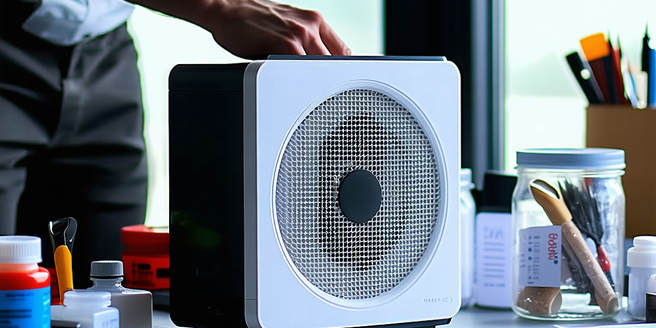
Understanding Air Pollution and Its Impacts on Health
Air pollution remains a significant global health concern, affecting millions of people every day. The contaminants can range from particulate matter, such as dust and smoke, to gaseous pollutants, including nitrogen oxides and sulfur dioxide. Exposure to these harmful substances is linked to respiratory diseases, heart conditions, and even cancer. By understanding the sources of pollution, including industrial emissions, vehicle exhaust, and household activities, individuals can take informed steps to protect their health. Public awareness and education can empower communities to push for cleaner air initiatives. Personal measures such as using public transportation, adopting energy-efficient appliances, and supporting green policies can collectively reduce pollution levels and safeguard public health. Addressing air pollution not only improves health outcomes but also contributes to planetary well-being.
Affordable Indoor Air Quality Improvement Techniques
Maintaining good indoor air quality is essential for a healthy living environment. Simple, cost-effective techniques can significantly enhance air quality at home. Start with regular ventilation by opening windows to allow fresh air circulation. Houseplants can be natural air purifiers, absorbing toxins and emitting oxygen. Consider using exhaust fans in kitchens and bathrooms to eliminate moisture and odors. Avoid using chemical-laden cleaning products; instead, opt for natural alternatives like vinegar and baking soda. Regular maintenance of HVAC systems ensures they function efficiently and do not circulate dust. Implementing a no-smoking policy indoors also minimizes exposure to harmful chemicals. With these affordable methods, you can create a healthier indoor atmosphere and reduce potential health risks associated with poor air quality.
DIY Air Quality Solutions for Tight Budgets
Improving air quality doesn’t have to break the bank; numerous do-it-yourself (DIY) solutions are both effective and affordable. Begin with simple changes, such as making a homemade air purifier using a fan and a high-quality air filter. This setup can capture dust, pollen, and other airborne particles effectively. Regularly clean or replace filters in air conditioning units and vacuum cleaners to prevent dust accumulation. Create natural air fresheners using essential oils and baking soda to keep indoor air fresh without synthetic fragrances. Implementing a routine of dusting and vacuuming helps to keep allergens at bay. Additionally, sealing windows and doors properly can prevent outdoor pollutants from entering your home. Embracing these budget-friendly alternatives can improve air quality while saving money.
Low-Cost Outdoor Air Quality Measures for Communities
Communities worldwide face the challenge of maintaining outdoor air quality amidst urbanization and industrial growth. Implementing low-cost measures can significantly impact minimizing pollution levels. Community tree-planting initiatives can enhance local air quality by absorbing carbon dioxide and other pollutants. Promoting green spaces, like parks and gardens, encourages biodiversity and provides natural air filtration while offering recreational areas. Encouraging carpooling, cycling, and public transportation reduces vehicle emissions. Local governments can incentivize the use of green technologies, such as solar panels and wind energy, within communities. Educational programs about pollution sources and prevention can inspire community involvement. These collective efforts in adopting sustainable practices and encouraging community participation can lead to substantial improvements in air quality.
Government and Non-Profit Programs for Air Quality
Governments and non-profit organizations play crucial roles in advancing air quality measures globally. Through legislation, governments can enforce strict emission standards for industries and vehicles, reducing harmful pollutants in the atmosphere. Subsidies and tax incentives can motivate businesses to invest in green technologies and cleaner production methods. Non-profit organizations can raise awareness through advocacy, education campaigns, and by lobbying for stronger environmental regulations. These entities also provide support and resources for local communities to implement air quality initiatives. Grants and funding from government bodies and non-profits can enable research into innovative solutions and support projects aimed at improving air standards. Collaborative efforts among these organizations are vital in driving substantial changes toward cleaner, healthier air.
Evaluating the Cost-Effectiveness of Air Purifiers
When considering air purifiers, it’s essential to weigh their cost-effectiveness, combining initial investment with long-term benefits. While air purifiers can be a significant expense upfront, especially those with advanced filtration systems, they offer substantial health benefits by reducing pollutants, allergens, and particulate matter indoors. Look for models with HEPA filters, as these effectively capture microscopic particles. Although maintaining filters can add to costs, some models come with washable filters, reducing ongoing expenses. Evaluate energy consumption, selecting devices with energy-efficient ratings. Cost-effectiveness can also be assessed by comparing health implications; fewer allergies and respiratory issues may lower medical expenses. In areas with high pollution, investing in an air purifier can enhance indoor air quality significantly, proving to be a worthwhile expenditure.
